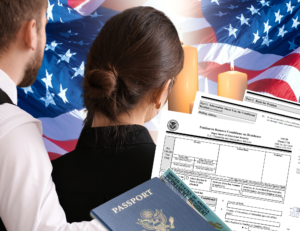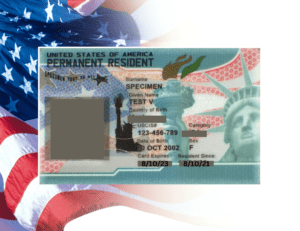Understanding the I-751 Petition Process: A Comprehensive Guide
As individuals navigate the path of obtaining permanent residency in the United States, the I-751 petition process holds a pivotal role in ensuring the longevity of their green cards. In this comprehensive guide, we delve into the intricacies of the I-751 petition, providing valuable insights and guidance for a successful application.
What is the I-751 Petition?
The I-751 petition, officially known as the Petition to Remove Conditions on Residence, is a crucial step for individuals who initially obtained a conditional green card based on marriage to a U.S. citizen or permanent resident. This petition aims to remove the conditions attached to the green card, thereby transitioning the individual to permanent resident status.
Key Elements of the I-751 Process:
Timing and Filing:
The I-751 petition should be filed jointly by the conditional green card holder and their spouse within the 90-day period before the conditional green card expires. In cases of divorce, death of the spouse, or situations involving abuse, the conditional resident may be eligible to file the petition alone.
Documentary Evidence:
A crucial aspect of the I-751 process is providing evidence that the marriage is genuine and not entered into for immigration purposes. Examples of supporting documentation include joint financial records, shared living arrangements, and letters of support from friends and family.
Interview:
USCIS may schedule an interview to assess the legitimacy of the marital relationship. Being well-prepared for this interview is essential. Individuals may be asked to provide additional evidence or clarify certain aspects during the interview.
Conditional Green Card Extension:
While the I-751 petition is pending, the conditional green card is automatically extended for 24 months to maintain the applicant’s legal status until their permanent residence status is approved.
Common Challenges and How to Address Them:
Change in Marital Status:
In cases of divorce or separation, individuals can still file the I-751 petition alone by requesting a waiver of the joint filing requirement. Providing evidence of the bona fide nature of the original marriage is crucial in these situations.
Insufficient Documentation:
Adequate documentation is key to a successful petition. Insufficient evidence may result in delays or denials. Seek legal guidance to ensure you are including the appropriate and persuasive documentation.
Tips for a Successful I-751 Petition:
Start Early:
Initiate the process well in advance to avoid complications due to processing times and potential delays.
Thorough Documentation:
Gather comprehensive evidence showcasing the legitimacy of your marriage. The more thorough and convincing your documentation, the stronger your case.
Prepare for the Interview (if applicable):
Familiarize yourself with potential interview questions and ensure you and your spouse are aligned in your responses.
Consider Legal Assistance:
Hiring an immigration attorney with experience in I-751 petitions can significantly enhance your chances of success. An attorney can guide you through the process, navigate challenges, and ensure all legal requirements are met.
Understanding the I-751 petition process is essential for a successful transition to permanent residency. By being proactive, gathering compelling evidence, and considering legal assistance, individuals can navigate this process with confidence and secure their status as permanent residents in the United States.
If you have specific questions or need personalized guidance on your I-751 petition, don’t hesitate to reach out to our experienced immigration team. We’re here to support you on your journey towards a permanent and secure future in the U.S.
Disclaimer: This blog post is intended for informational purposes only and should not be construed as legal advice. Consult with an immigration attorney for advice regarding your specific situation.

 If you obtained your two-year green card through marriage and your US citizen (or LPR spouse) died, you are still able to renew your green card by filing Form I-751, Petition to Remove Conditions on Residence. If you are successful, USCIS will grant you a 10-year green card (Form I-551)! To be successful on this application, you will need to show that yours was a “real” (aka bona fide) relationship and marriage. Or, in other words, you need to prove to USCIS that you did not get married just to get a green card. Also, you need to prove that your spouse died, with a death certificate.
If you obtained your two-year green card through marriage and your US citizen (or LPR spouse) died, you are still able to renew your green card by filing Form I-751, Petition to Remove Conditions on Residence. If you are successful, USCIS will grant you a 10-year green card (Form I-551)! To be successful on this application, you will need to show that yours was a “real” (aka bona fide) relationship and marriage. Or, in other words, you need to prove to USCIS that you did not get married just to get a green card. Also, you need to prove that your spouse died, with a death certificate. If you obtained your two-year green card through marriage and your US citizen (or LPR spouse) died, you are still able to renew your green card by filing Form I-751, Petition to Remove Conditions on Residence. If you are successful, USCIS will grant you a 10-year green card (Form I-551)! To be successful on this application, you will need to show that yours was a “real” (aka bona fide) relationship and marriage. Or, in other words, you need to prove to USCIS that you did not get married just to get a green card. Also, you need to prove that your spouse died, with a death certificate.
If you obtained your two-year green card through marriage and your US citizen (or LPR spouse) died, you are still able to renew your green card by filing Form I-751, Petition to Remove Conditions on Residence. If you are successful, USCIS will grant you a 10-year green card (Form I-551)! To be successful on this application, you will need to show that yours was a “real” (aka bona fide) relationship and marriage. Or, in other words, you need to prove to USCIS that you did not get married just to get a green card. Also, you need to prove that your spouse died, with a death certificate. To renew your two-year green card, you will file Form I-751, Petition to Remove Conditions on Residence, with U.S. Citizenship and Immigration Services (USCIS). Here is how to prepare your filing:
To renew your two-year green card, you will file Form I-751, Petition to Remove Conditions on Residence, with U.S. Citizenship and Immigration Services (USCIS). Here is how to prepare your filing: